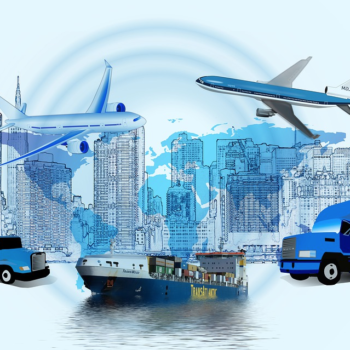APAC Retailers Should Pick Right Tools & Partners for E-Commerce Logistics

Digital platforms are empowering brands to widen their customer reach and sales channels, but they must tap the right tools and partners to ensure they have robust logistics support, says Joseph Ng (pictured below), CEO of Skyfy Technology, a Singapore-based provider of fleet management and vehicle tracking systems. In this byliner for RetailTechNews, Ng discusses key trends he sees unfolding in the Southeast Asian e-commerce landscape.
Digital transformation has had a positive impact on e-commerce, especially in the areas of workflow and processes, order fulfilment, and customer engagement. Companies are tapping digital tools to offer safer online transactions, safer checkouts, and more personalised experience for shoppers. For instance, access to real-time information lets retailers know instantly if a product will arrive later than expected, allowing them to proactively reach out to customers.
Continued innovation in logistics will bring further improvements to Asia's e-commerce infrastructure. Skyfy believes a couple of key trends will take form in the near future.
First, last-mile logistics will become commoditised in Southeast Asia. Logistics is often considered the biggest bottleneck in the region's e-commerce ecosystem. This has fuelled significant venture capital funds in the sector, spawning an army of last-mile and on-demand delivery startups in recent years such as Ninja Van, Ascend Group's Sendit, and Skootar. Even ride-sharing apps such as Go-Jek and Grab have expanded their platform to include delivery services as an additional revenue stream.

Joseph Ng, CEO, Skyfy Technology
These developments have added pressure on market incumbents, such as Kerry Logistics, DHL, and JNE, which are only scratching the surface in the fast-paced e-commerce logistics space.
The emergence of startups and the push for traditional players to catch up will drive the commoditisation of last-mile delivery services.
This year also will mark the beginning of consolidation in Southeast Asia's online payments space. The dominance of cash-on-delivery (COD), which accounts for 75% of the region's e-commerce transactions, has inspired a plethora of startups, such as Omise and DOKU, as well as established telcos and banks to build the next PayPal service.
In addition, the increasing importance of delivering an omnichannel user experience means payments service providers, too, must have an omnichannel strategy and ensure they can accept all forms of payments.
Consumers today look for a similar experience wherever they are, regardless of the type of environment in which the transaction takes place – be it online or offline – and whether it involves the use of a card or not.
As the number of different payment methods continues to grow, there will be opportunities for consolidation in this sector.
Choose right tools and partners to ensure robust e-commerce fulfilment
With the region's e-commerce industry growing exponentially, it is essential that retailers pick the right tools and partners with which to work.
Optimising last-mile deliveries, for one, starts with a fit-for-purpose fulfilment network or technology solution. This should be based on relevant service requirements that have a direct impact on online conversions. As such, it is essential the design of the solution is an integrated effort of both category management and supply chain management.
Since not all customers and products are created the same, these should be classified as segments based on distinctive delivery requirements such as lead-time, willingness to pay, and shopping basket composition. For each of these segments, last-mile options should be identified and assessed on their benefits and ability to meet customer and business requirements.
Typically, the fit of a last-mile configuration can be assessed by its lead-time, cost-to-serve, technology complexity, and supply-chain control. For example, low-value convenience products may not require same-day delivery, while high-value products actually may demand it.
The growing number of partners needed to support the ecosystem requires companies to rethink their operating model for logistics and take on more of an orchestrator role for their fulfilment function. To ensure effective third-party performance management, it's critical to have the right tools in place and the right set of KPIs (key performance indicators) and SLAs (service level agreements) with logistics partners.
When choosing a third-party logistics company, it is important to consider its geographical presence. Companies with operations in multiple countries within a region may want to work with a provider that is similarly located.
Third-party logistics companies (3PLs) and carriers alike are investing more and more to expand their own logistics network, technology, and services. As a result, they have surfaced as key players in perfecting the last mile.
Leveraging the right technology also helps to streamline the fulfilment process. For example, when an order is placed, the solution can automatically notify the person or company responsible for shipping the item.
Users can create multiple fulfilment reports – one for each fulfilment provider and the group of products they are responsible for shipping. The fulfilment report displays the customer's contact information, shipping information, as well as the quantity and name of product ordered.
In the age of innovation, digital platforms and tools are empowering brands to open new channels and broaden their customer reach, driving revenue streams, profits, and financial performance. By using digital tools and platforms, brands no longer need to rely on traditional retail and wholesale distribution and sales channels. This is the future of e-commerce logistics.This content was originally published in RetailTechNews.
Customer ExperienceE-CommerceOmnichannelPersonalisation








Follow ExchangeWire